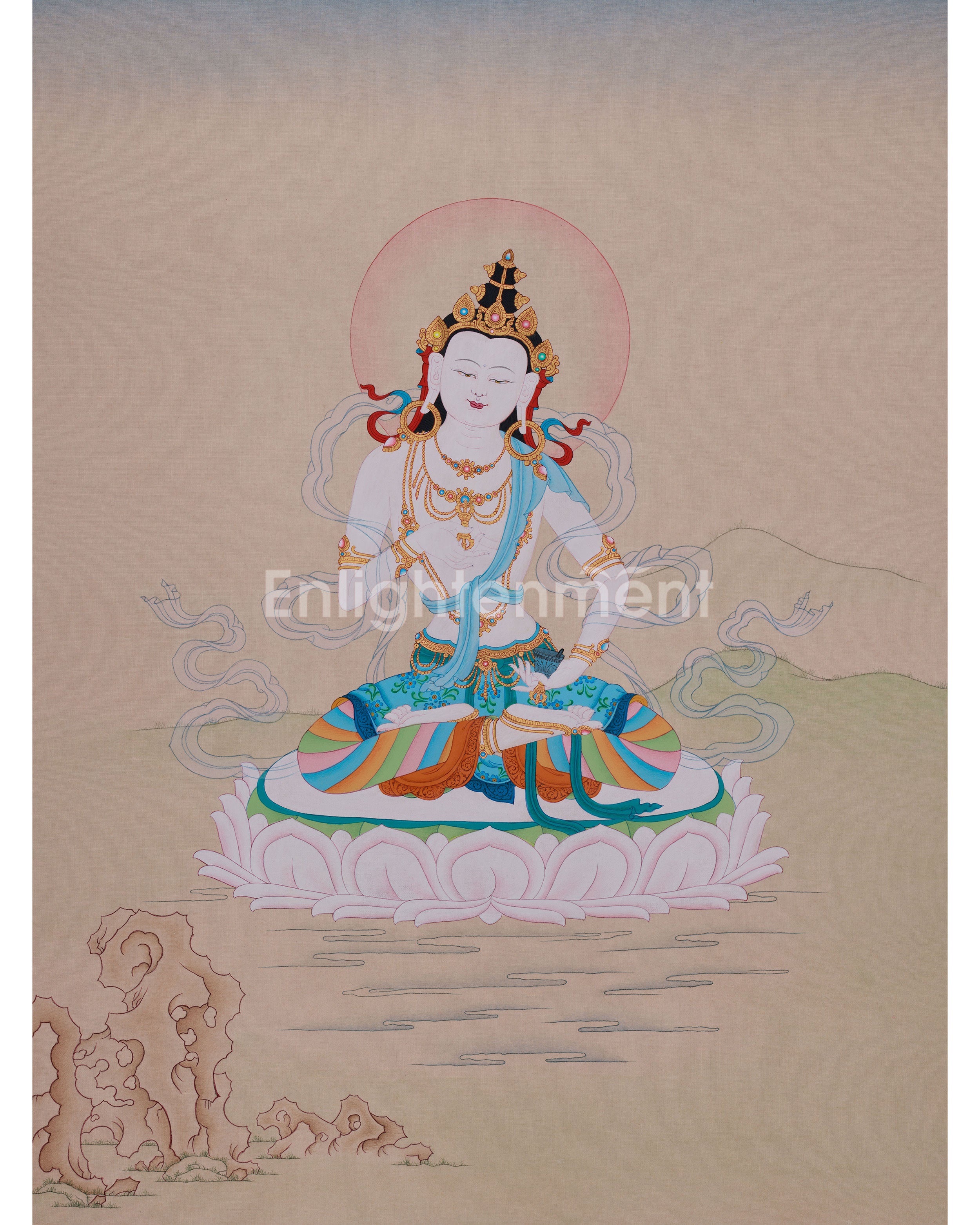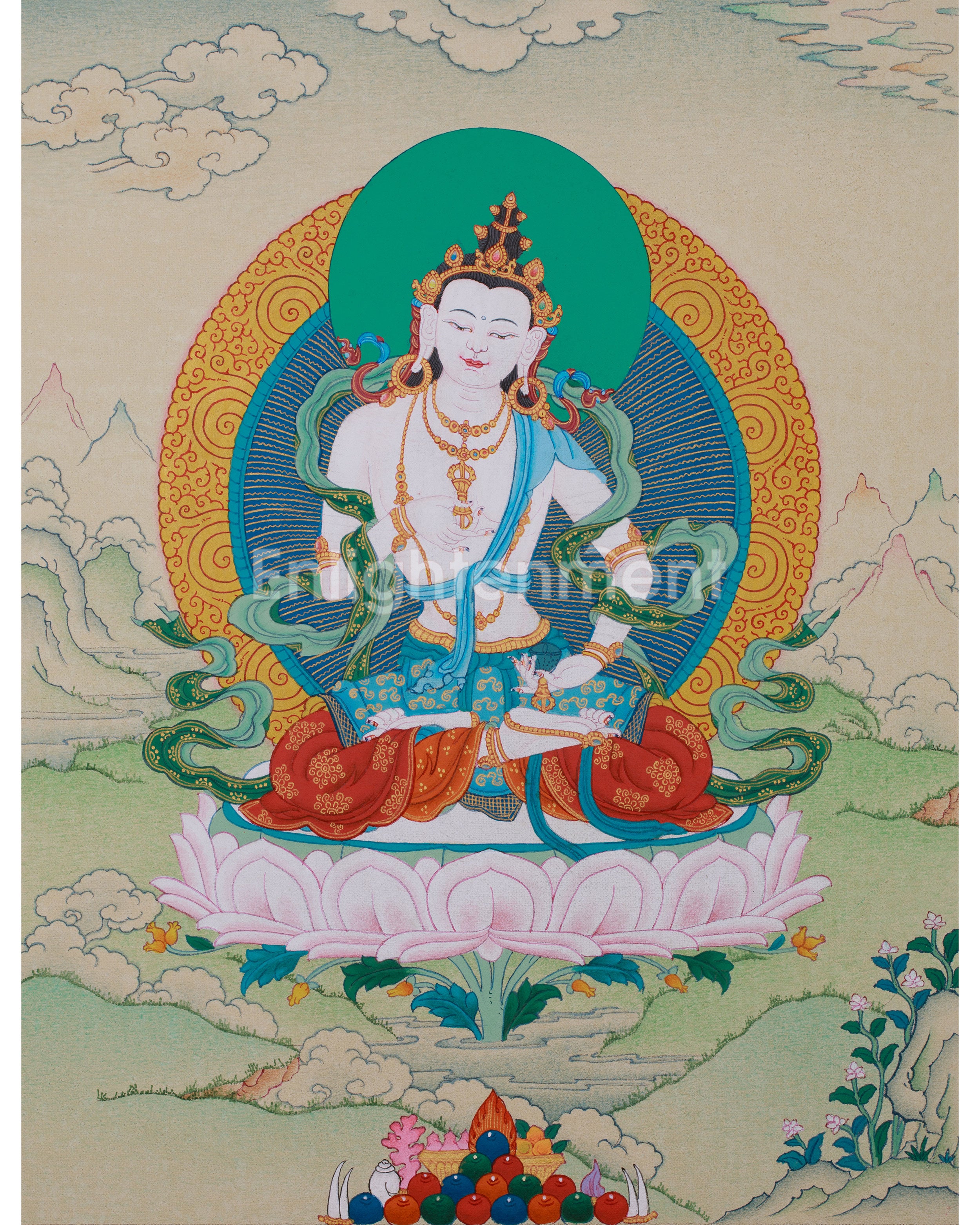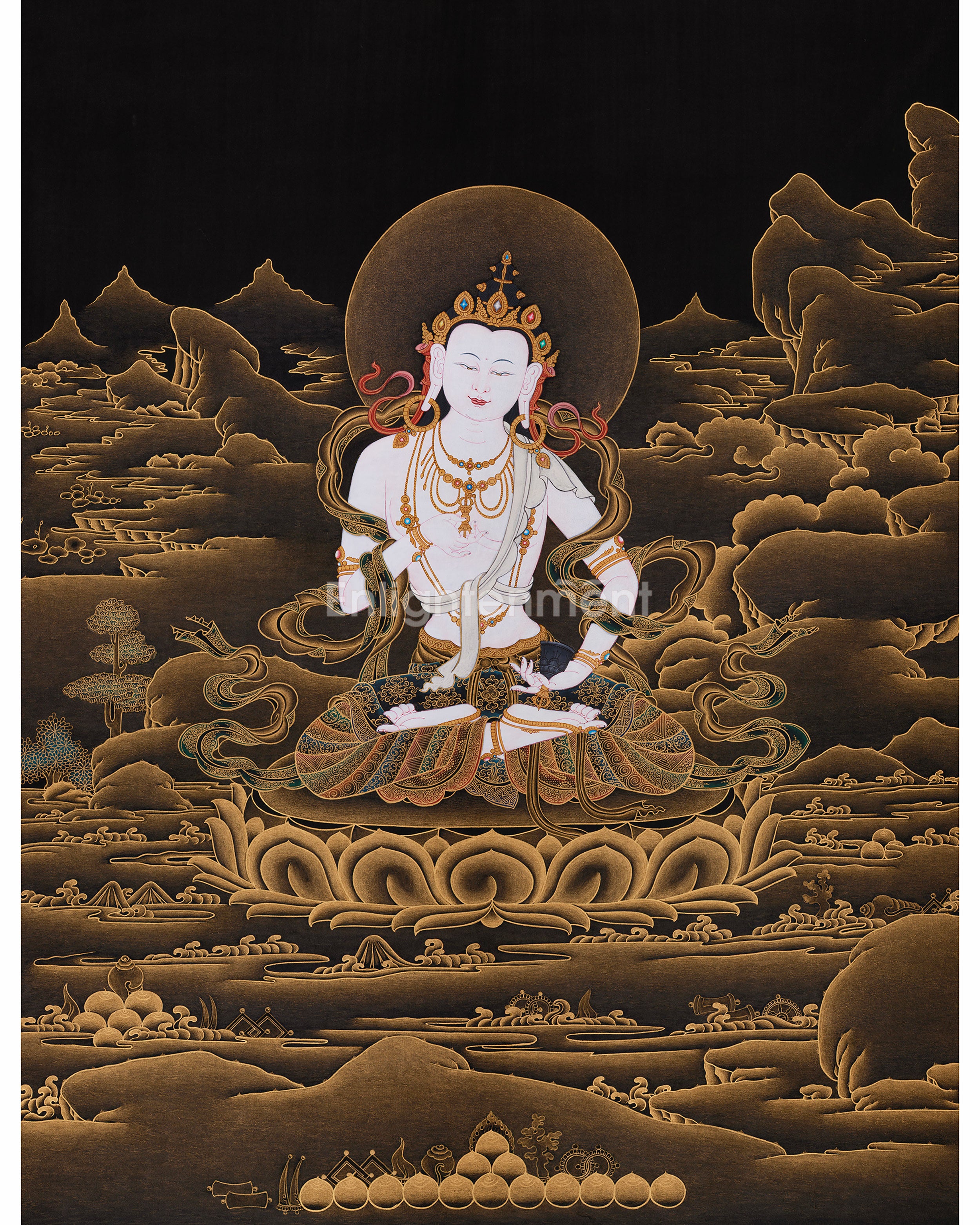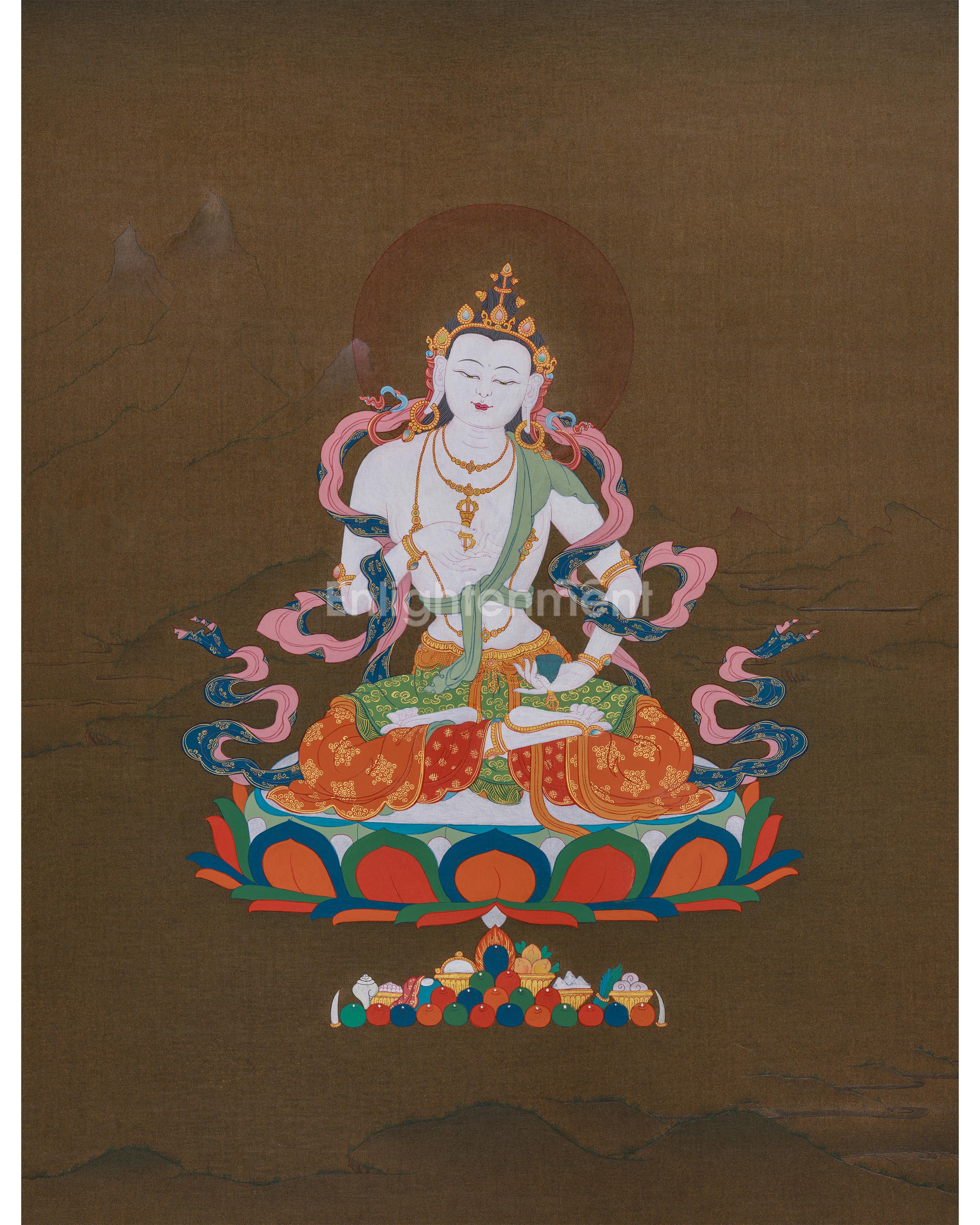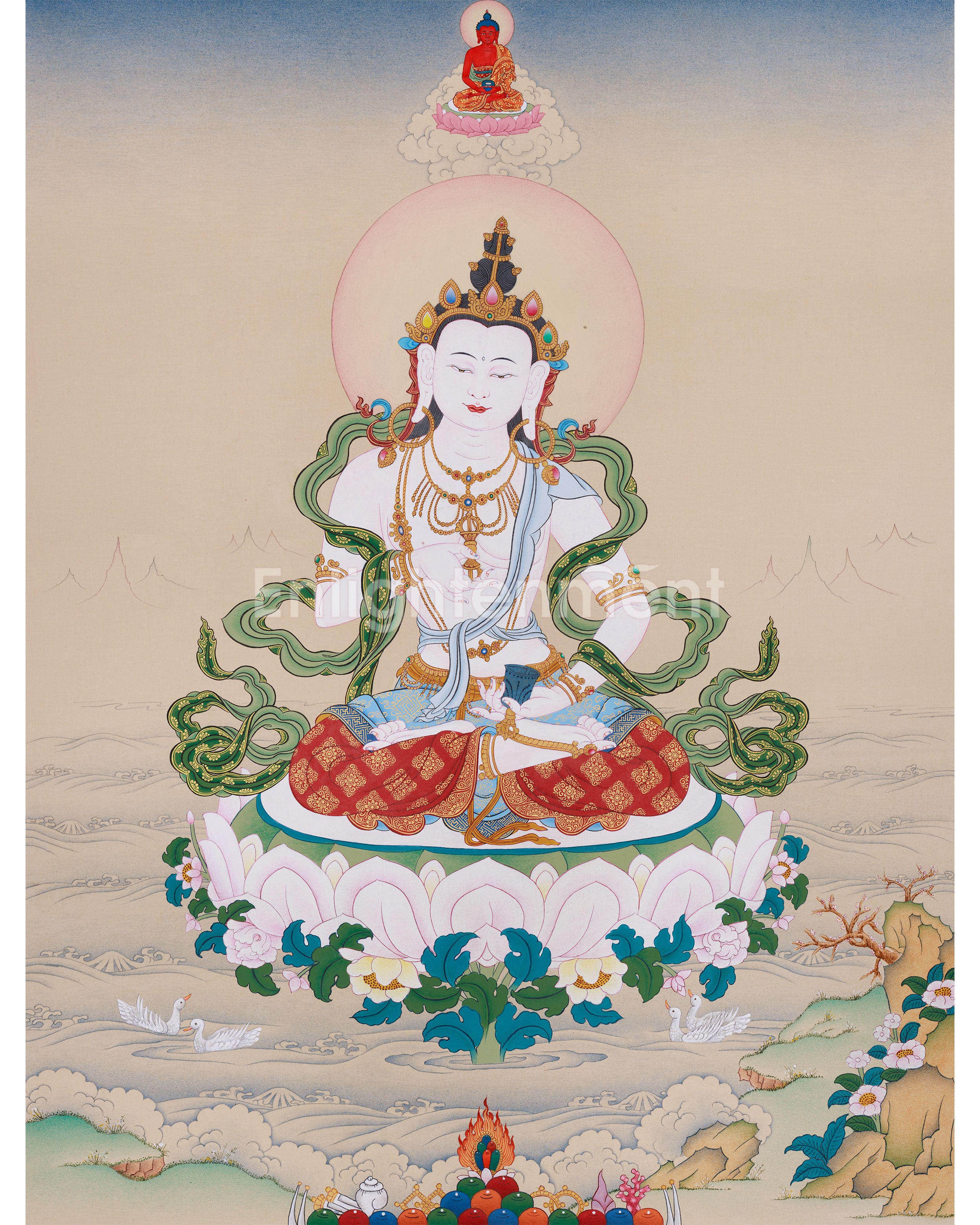Vajrasattva
8 products
Showing 1 - 8 of 8 products
Purification Through Timeless Art: A Curated Selection of Vajrasattva Thangkas
Vajrasattva is one of the Dhyani Buddhas, but unlike other Dhyani Buddhas, he is sometimes presented independently. He holds a vajra and bell, and is white in color. The Vajrasattva thangkas are usually popular among the Vajrayana practitioners who contemplate upon the deity to purify their correspondences. Vajrasattva’s posture is non-threatening and the deity is peaceful in this two-armed and single-faced form in the thangkas.
Our Vajrasattva Thangka Collection presents an exquisite array of artworks capturing this deity’s iconography across a variety of traditional styles. Whether you seek a thangka for personal practice, as a sacred offering, or for its artistic richness, this collection brings you a refined selection.
Iconographic Features:
-
Vajrasattva is depicted in a radiant white body, seated in a cross-legged posture.
-
He holds a vajra (dorje) in his right hand symbolizing skillful means and a bell (ghanta) in his left hand representing wisdom.
-
In Yabyum form, he is united with his consort, expressing the inseparable nature of wisdom and compassion.
Explore Our Rich Spectrum of Vajrasattva Thangka Styles:
-
Karma Gadri Style:
Known for its open composition, muted tones, and ethereal landscapes, Karma Gadri thangkas offer a serene yet deeply expressive portrayal of Vajrasattva. These thangkas often depict Vajrasattva seated amidst tranquil valleys or clouds, echoing the expansive space of the mind. -
Black & Gold Thangka of Vajrasattva:
These high-contrast compositions reflect a sacred gravitas, where Vajrasattva’s form arises from a deep black background in radiant 24K gold detailing. Highly symbolic and visually powerful, these thangkas are ideal for contemplative environments or altar spaces. -
Traditional Menri Style Vajrasattva
More ornate and richly colored, these thangkas follow precise proportions and intricate detailing based on traditional manuals. This style features vibrant pigments, elaborate backdrops, and stylized floral and jewel motifs. -
Vajrasattva Yabyum (with Consort) Thangka
Representing the union of wisdom and compassion, Vajrasattva is shown in union with his consort. This depiction—central to certain Vajrayana practices—symbolizes the non-duality of ultimate reality and offers an empowering visualization for tantric practitioners.
Why Keep a Vajrasattva Thangka in your Meditation Altar?
-
For Purification Practice: Vajrasattva thangkas serve as a visual focus during the 100-syllable mantra recitation and ngondro preliminary practices.
-
For Devotional Offering: It makes a meaningful and symbolic offering to one's guru or practice space.
-
For Meditation: The peaceful, balanced form of Vajrasattva promotes inner clarity, compassion, and transformation.
-
For Practitioners and Collectors: With a range of authentic styles, each piece connects the practitioner to a specific lineage and artistic tradition.
